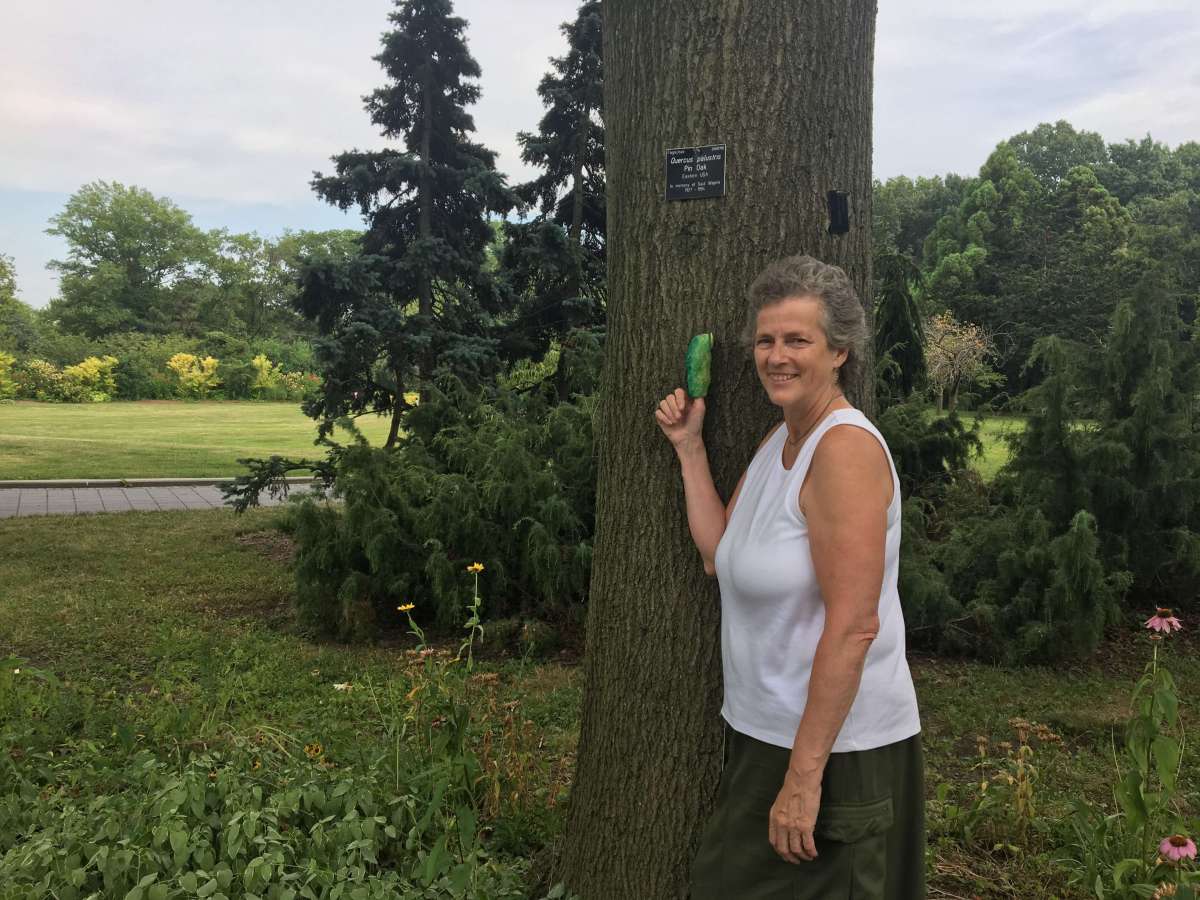For a few weeks in 1994, Susan Lacerte would drive home from work, cry and ask her husband a question.
“I’d first go through the door and I’d burst into tears and say, ‘Archie, why did I ever say yes to this?’” Lacerte said.
She had just taken a job as the executive director of the failing Queens Botanical Garden in Flushing at the age of 38.
Twenty-five years later, Lacerte, who remains the executive director, has transformed the Queens Botanical Garden into one of the borough’s top cultural landmarks. The garden, which hosts about 250,000 visitors per year, has become home to a broad range of programing and partnerships, a leading example in environmentally friendly design, and a singular, focused vision: to be the place where people, plants and culture meet.
“To see that the work we’re doing here, what other gardens are doing and to see how it’s gone out into the world – it’s just wonderful,” Lacerte said.
Before Lacerte took the lead, there was little in the garden to be celebrated. No programming, dilapidated grounds and a poor – and, in some cases, non-existent – reputation, made Lacerte’s early days in the job daunting.
“It was a very challenging time,” Lacerte said. “People didn’t want to be on the board. There had been a lot of negative press just prior. The garden looked horrible.”
There wasn’t much expected of her — or anyone — at the time, she said. A member of the search committee to fill the executive director’s seat told Lacerte that if she failed or decided to quit, no one would see it as an individual failure. The garden was such a mess already.
The garden only had one public event a year: an Arbor Day celebration for kids.
“There were no other public events,” Lacerte said. “And so, it was just really pulling this place up by the bootstraps.”
While the young director decided to make cleaning up the garden the first step toward positive growth, she also knew they would need to have a public event.
It hadn’t been long since Saul Weprin, the former speaker of the New York State Assembly, had died and so Lacerte decided to plan an event to honor the late Queens leader, centered around a tree dedication ceremony.
The event was a success and a turning point for Lacerte and the garden.
“A lot of Council members, Assembly members, a lot of people came here,” Lacerte said. “I saw that people cared. And that really helped me understand that there’s a lot of community involvement here and it’ll be okay.”
As the years went on, Lacerte continued to make the garden more and more public. And as such, she began to focus on what makes Queens special: its diversity.
“We came up with this idea to the place where people, plants and culture meet,” Lacerte said. “And it made sense for Queens.”
The Queens Botanical Garden began projects centered around that idea. One project focused on collecting the 10 most important plants from the Chinese, Hispanic and Korean communities.
As time passed, Lacerte said, the garden became a place built for and informed by the community.
Nowhere was this more evident than in the garden’s visitor and administrative building, a project spearheaded by Lacerte.
The building, with its three working roofs, is both emblematic of the garden’s mission and good for the environment, of course.
The building, with its giant canopy that looks like a tree itself, uses geothermal technology, solar panels and composting toilets.
“When I was growing up and camping, I used to use these latrines and things like that,” Lacerte said. “I just said, ‘I want a composting toilet in this building.’ So, the first fully permitted composting toilet in New York City is right here.”
On a recent afternoon in July, Lacerte took a walk through her garden — and through her accomplishments.
Ketan Modi, a frequent patron of the garden, was showing his son around. Lacerte and Modi chatted for a while.
The Queens Botanical Garden was one of the first places Modi visited when he immigrated to the U.S. and he hasn’t stopped coming by.
He visits about 30 times a year and now hopes that his son will do the same.
It was a particularly hot day, but people were out and using the garden. Some sat alone on benches, reading or taking a breather. Two women dressed as fairies, with wings on their backs and glitter on their faces, took photos of each other in front of a patch of flowers. Earlier that morning, a group had come to the park to practice tai chi.
People, plants and culture were meeting throughout the garden, just as Lacerte had intended.
“I took a picture a couple of weeks ago, sent it to my kids and said, ‘My everyday existence in New York City,’” Lacerte said, looking around. “It’s a beautiful thing.”




































